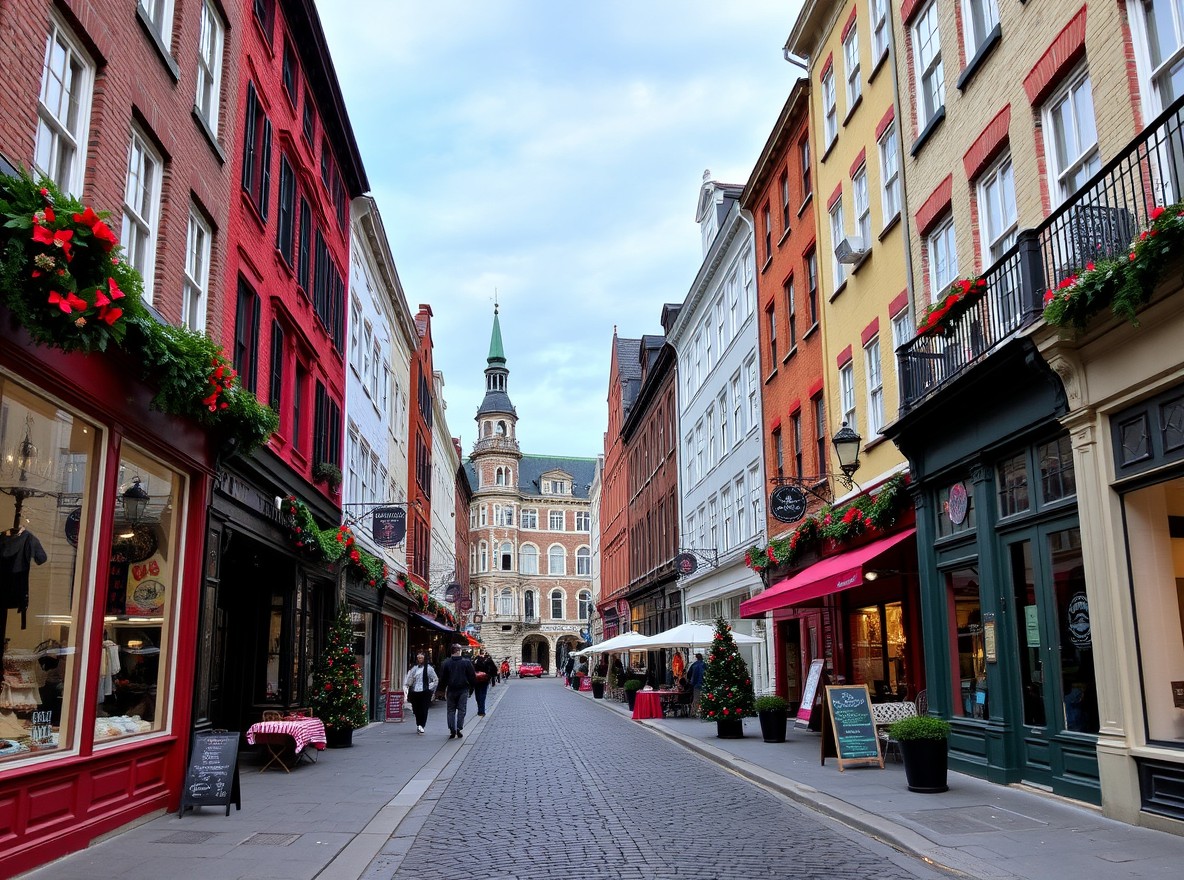Overview:
Old Quebec City, or Vieux-Québec, is a UNESCO World Heritage site that transports visitors back in time. Nestled on the banks of the St. Lawrence River, this charming district features cobblestone streets, centuries-old architecture, and a rich history that dates back to the 17th century. As one of North America’s most well-preserved colonial cities, Old Quebec City is a place where history, culture, and French heritage come to life. Whether you’re strolling through its winding streets, exploring iconic landmarks, or enjoying its quaint cafes and shops, Old Quebec City offers a unique blend of old-world charm and modern amenities.

Quick Facts:
- Location: Quebec, Canada
- Established: Founded in 1608 by Samuel de Champlain
- Population: Approximately 540,000 (Greater Quebec City Area)
- Famous Attractions: Château Frontenac, Old Port, Place Royale, Citadelle of Quebec, Terrasse Dufferin, St. Lawrence River
- Currency: Canadian Dollar (CAD)
- Languages Spoken: French (official), English is widely spoken
- Best Time to Visit: June to September (for pleasant weather), December to February (for a winter wonderland experience)
- Time Zone: Eastern Standard Time (EST)
- Distance from Major Airports:
- Quebec City Jean Lesage International Airport (YQB) – 20-minute drive (15 km / 9 miles)
Budget (in local currency & USD):
| Item | Cost (CAD) | Cost (USD) |
|---|---|---|
| Accommodation | $100 – $250/night | $75 – $185/night |
| Meals | $10 – $50 | $7 – $38 |
| Attractions | $10 – $30 | $7 – $22 |
| Transportation | $5 – $30/day | $4 – $22/day |
| Souvenirs | $5 – $50 | $3 – $38 |
| Total Daily Budget | $60 – $350 | $45 – $260 |
Flights:
Quebec City is easily accessible from major Canadian cities as well as international destinations. The primary gateway to the city is Quebec City Jean Lesage International Airport (YQB), which is about 20 minutes from Old Quebec City. Direct flights from cities like Montreal, Toronto, and New York are common, and from Europe, it is accessible with a layover or through connecting flights. Flight times vary from 1 hour (from Montreal) to 7-8 hours (from Europe), with most international travelers arriving through Montreal and continuing by domestic flight or train.Safety:
Old Quebec City is known for being safe and welcoming to tourists. As with any city, it’s important to take the usual precautions, such as keeping valuables secure and being aware of your surroundings, particularly in crowded areas. The district is well-patrolled by local police, and emergency services are easily accessible. Quebecers are generally friendly, and many speak both French and English, making communication easy for tourists. As Old Quebec is a walkable area with many cobblestone streets, it’s advisable to wear comfortable shoes to avoid slipping on uneven paths.
Climate:
- Winter (December – February): Cold and snowy, with temperatures ranging from -10°C to -20°C (14°F to -4°F). Winter in Old Quebec City offers a magical atmosphere with festive decorations and activities like ice skating, sledding, and the famous Winter Carnival.
- Spring (March – May): Temperatures range from 5°C to 15°C (41°F to 59°F), with the snow melting and flowers beginning to bloom. Spring is a lovely time to visit, as the city slowly awakens from winter and outdoor activities become more enjoyable.
- Summer (June – August): Mild to warm temperatures from 15°C to 25°C (59°F to 77°F). This is the peak tourist season, with pleasant weather for walking tours, outdoor dining, and visiting landmarks. It’s also the season for festivals and events, including the Festival d’été de Québec.
- Fall (September – November): Temperatures from 10°C to 20°C (50°F to 68°F). Fall is a beautiful time to visit, as the foliage changes color, and the crowds thin out. The weather is crisp, and outdoor exploration is ideal during this time.

